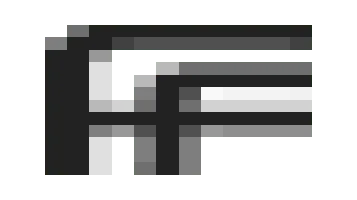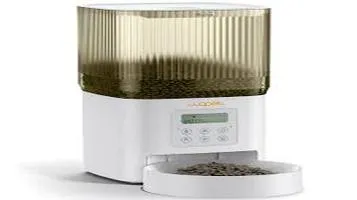Review of Landscape Fabric: A Gardener’s Best Friend?
Landscape fabric is a versatile and durable material commonly used in gardening and landscaping to control weeds and promote healthy plant growth. Typically made from woven or non-woven polypropylene, this fabric acts as a barrier, preventing sunlight from reaching the soil, thus inhibiting weed germination while allowing air, water, and nutrients to penetrate through to the roots of desired plants. Easy to install, landscape fabric is often laid down before planting and covered with mulch or decorative stones for aesthetic appeal. It is ideal for use in flower beds, vegetable gardens, and under pathways. By reducing the need for chemical weed control, landscape fabric offers an eco-friendly solution for maintaining neat and low-maintenance outdoor spaces.

Landscape fabric is often hailed as a gardener's secret weapon, offering a range of benefits from weed suppression to soil moisture retention. However, like any tool in the gardener's arsenal, it comes with its own set of pros and cons. In this comprehensive review, we'll delve into the various aspects of landscape fabric to help you decide whether it's the right choice for your gardening needs.
What is Landscape Fabric?
Landscape fabric, also known as weed barrier fabric, is a permeable textile used in gardens and landscaping projects to block weed growth while allowing water and nutrients to pass through to the soil. Typically made from woven polypropylene or polyester, it is available in various thicknesses and densities, each suited for different applications.
Benefits of Landscape Fabric
Weed Control
The primary advantage of landscape fabric is its ability to suppress weeds. By creating a physical barrier between the soil and the surface, it significantly reduces the chances of weed seeds germinating and growing. This can save you countless hours of back-breaking weeding and reduce the need for chemical herbicides.
Soil Moisture Retention
Landscape fabric helps retain soil moisture by reducing evaporation. This is particularly beneficial in arid climates or during dry spells, ensuring that your plants receive the moisture they need to thrive. The fabric allows water to penetrate but slows down the rate at which it evaporates, making your watering efforts more efficient.
Soil Temperature Regulation
Another often overlooked benefit is soil temperature regulation. Landscape fabric can help maintain a more consistent soil temperature, which is beneficial for plant roots. During the hot summer months, it can prevent the soil from becoming too hot, and in cooler weather, it can help retain some warmth.
Erosion Control
For sloped gardens or areas prone to erosion, landscape fabric provides an additional layer of stability. By holding the soil in place, it prevents erosion caused by wind and water runoff, making it an excellent choice for hillside gardens or areas with loose soil.
Improved Aesthetics
Finally, landscape fabric can improve the overall look of your garden. By keeping weeds at bay and allowing for a clean, neat appearance, it gives your garden a well-maintained and professional look. It’s particularly useful for creating clean lines around flower beds, pathways, and other landscaped areas.
Drawbacks of Landscape Fabric
Initial Cost
One of the main drawbacks of landscape fabric is the initial cost. High-quality fabric can be expensive, and the cost can add up quickly for larger areas. However, this is often offset by the long-term savings in weed control and reduced maintenance.
Soil Health Concerns
Some gardeners argue that landscape fabric can negatively impact soil health. Over time, organic matter from decomposing mulch or plant material can build up on top of the fabric, creating a layer that can harbor pests and diseases. Additionally, the fabric can restrict the natural movement of earthworms and other beneficial organisms that help aerate and enrich the soil.
Limited Lifespan
While landscape fabric is durable, it is not indestructible. Over time, it can degrade due to exposure to UV rays, extreme temperatures, and physical wear and tear. This means that it will eventually need to be replaced, which can be labor-intensive and costly.
Installation Challenges
Proper installation is crucial for the effectiveness of landscape fabric. If not installed correctly, weeds can still find their way through seams or gaps. Additionally, cutting holes for plants can be time-consuming and requires precision to avoid damaging the fabric.
Aesthetic Limitations
While landscape fabric can improve the look of your garden, it can also be visually limiting. If not covered adequately with mulch or other materials, the fabric itself can become exposed and detract from the garden's appearance. Moreover, it can sometimes be challenging to integrate into more naturalistic garden designs.
Tips for Effective Use
If you decide to use landscape fabric, here are some tips to maximize its benefits:
1. Choose the Right Fabric: Opt for high-quality, UV-resistant fabric with the appropriate density for your specific needs.
2. Proper Installation: Take the time to install the fabric correctly. Overlap seams by at least 6 inches and secure the edges with landscape staples.
3. Combine with Mulch: Cover the fabric with a layer of mulch to enhance its appearance and provide additional weed suppression.
4. Monitor and Maintain: Regularly check for any signs of wear or weed growth and address issues promptly to extend the fabric’s lifespan.
5. Replace When Necessary: Be prepared to replace the fabric periodically to maintain its effectiveness.
Conclusion
Landscape fabric offers a practical solution for many common gardening challenges, from weed control to soil moisture retention. While it has its drawbacks, the benefits often outweigh the disadvantages, particularly when used correctly. Whether you're a novice gardener or an experienced landscaper, landscape fabric can be a valuable addition to your gardening toolkit. By carefully considering your specific needs and following best practices for installation and maintenance, you can make the most of what landscape fabric has to offer.






